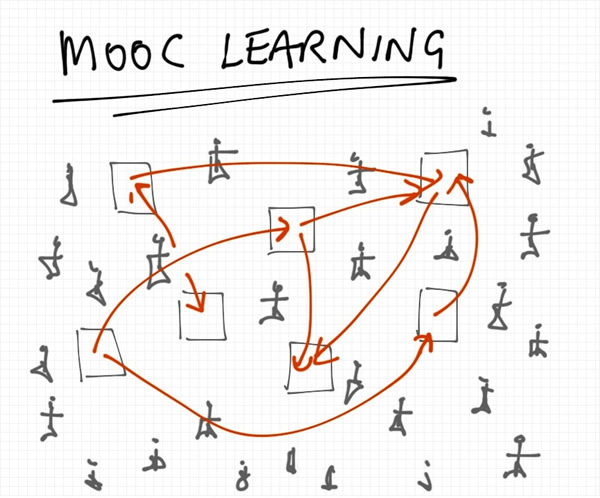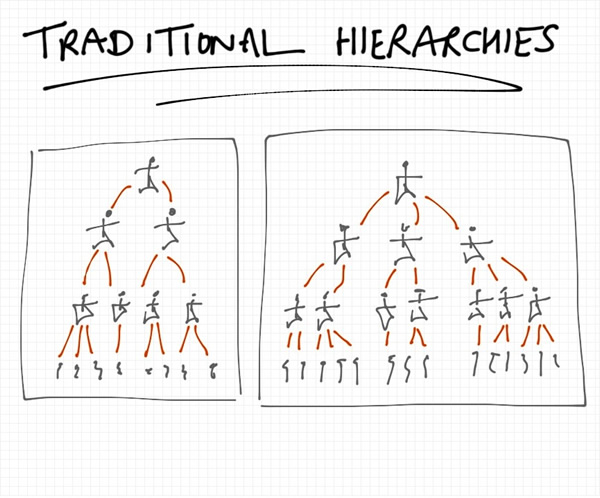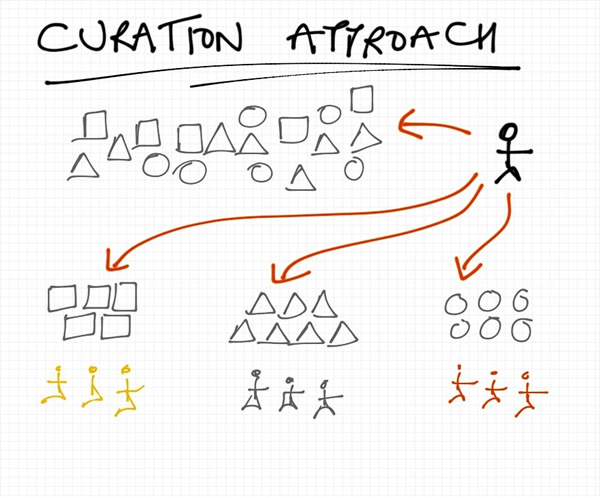ATD Blog
Scaling, Analyzing, and Organizing Learning with Technology
Mon Jun 17 2013

Several weeks after ASTD 2013, the thought that stays with me is that as learning professionals, we need to re-think the way we view our business.
Armed with my new passion for visualization (fueled by my recent collaboration with Frederic Williquet) and far from the hot conference bustle of Dallas in May, I want to tell you what I mean: It's all about scaling, analyzing, and organizing information and learning solutions in order to bring maximum (learning) impact and business performance.
Case 1: Innovating Traditional Learning with a MOOC Scaling Strategy
Anyone who has heard of Google’s now-famous interview question, "shrunk to the size of a penny and thrown in a blender," knows that Google is obsessed with the concept of scaling. But scaling-up traditional learning from maximum 12 people to a MOOC-sized learning audience in the hundreds or thousands requires a new vision of things.
In traditional learning and training approaches, a small number of people are pulled toward a common objective by a learning leader who asks them to follow a set learning process in a linear fashion.

However, in a MOOC, a massive number of people collaborate in order to meet individual learning needs via more granular, free, and social tools.

The ASTD 2013 session SU111 explored just how this sort of scaling occurs at Google, as well as main issues to consider with scaling solutions. Today, I am asking myself:
How can I scale up my current learning initiatives to have more impact?
How can I bring more collaboration and social learning into action?
How can I split learning activities into more diverse mini chunks that people can freely follow in a way that suits their needs?
Case 2: Analyzing Informal Social Learning Networks to Increase Human Potential
Many agree that the current approach to the organization of people and competencies at work—based on the Industrial Revolution; Henry Ford; factory work; hierarchical, compartmentalized, and linear business models—is out of date. In the new world of work, there is more movement of people, ad-hoc collaboration, and fast moving connectivity that ignores or defies hierarchy and traditional organization charts.
If you see your organization and its potential the same way as the HR department draws the “organigrams,” then either people, knowledge, and potential is restricted by top-down disconnected departments or (which is far more likely) you fail to see how things really work.

Today's workplace is far more agile, collaborative, and connected than you may think. The people with job descriptions that suggest little power may, in fact, be highly influential nodes in some or other informal social network that has come to life in your organization.

During ASTD 2013 session SU301, Shari Yocum discussed how to analyze and evaluate these informal networks in order to identify the real influencers, potential for growth and areas at risk.
Today, I am asking myself:
How do I myself fit into my wider network? What and where is my influence? Where am I restricted and where can I better support others?
How can we multiply potential (as suggested by Liz Wiseman's ASTD 2013 keynote session) in order to release potential that may be currently lying stagnant?
Which people in the organizations or departments I work with hold the keys to more connectivity, creativity, innovation and organizational development?
Case 3: Curating Digital Noise to Create More Relevance and Effectiveness
If you have spent any time in a large organization filled with contradictory processes and disorganized information, or if your RSS and Twitter feeds are filled with overwhelming or irrelevant quantities of digital noise...you need more curation.
Innovative social Web 2.0 possibilities plus non-evolved "each-to-his-own" and "every-man-for-himself" working traditions leads to noise, inefficiency, and repetition of information for everyone in a digital world.

Conversely, a curated approach to the analysis, organization, and distribution of digital noise leads well-defined packets of information that are tailored to specific profiles and needs.

During ASTD 2013 session SU210, attendees heard about the competence of curation from David Kelly.
Today, I am asking myself:
Am I adding to the noise or is what I produce easy to curate?
How can I better contextualize, "tag" and share content that I create myself or find on the web (and elsewhere)?
Who trusts me as a curator and why?
I have recently learned for myself that rethinking (organizational) problems by better visualization of the status quo can offer more perspective and ideas for innovation. I also think that any business person (learning professional or not) who asks themselves the "scaling, analyzing, and organizing" questions I posed in this article will have a chance to release more learning potential—and achieve better business results.
What do you think?
You've Reached ATD Member-only Content
Become an ATD member to continue
Already a member?Sign In
